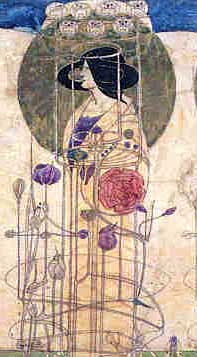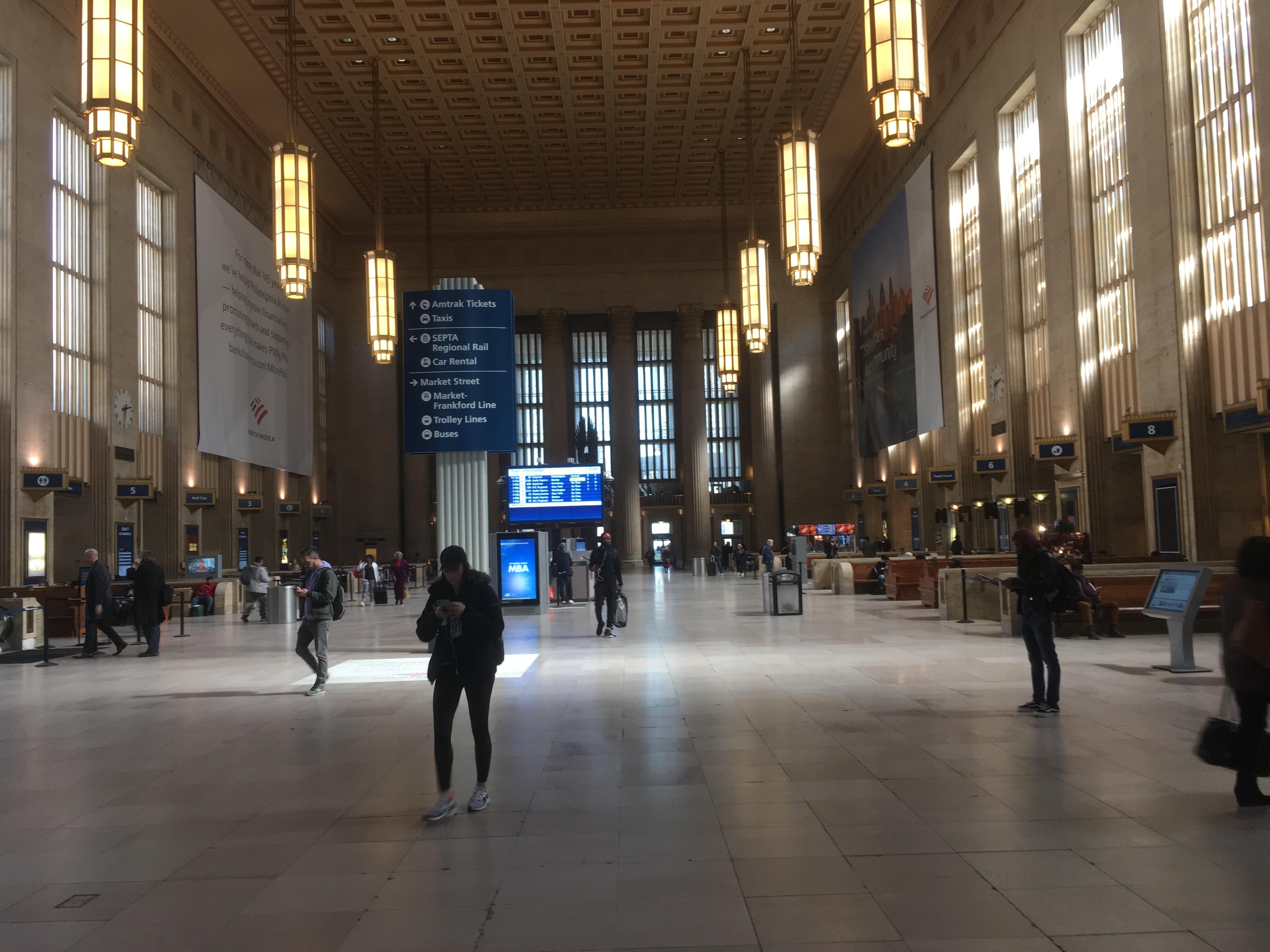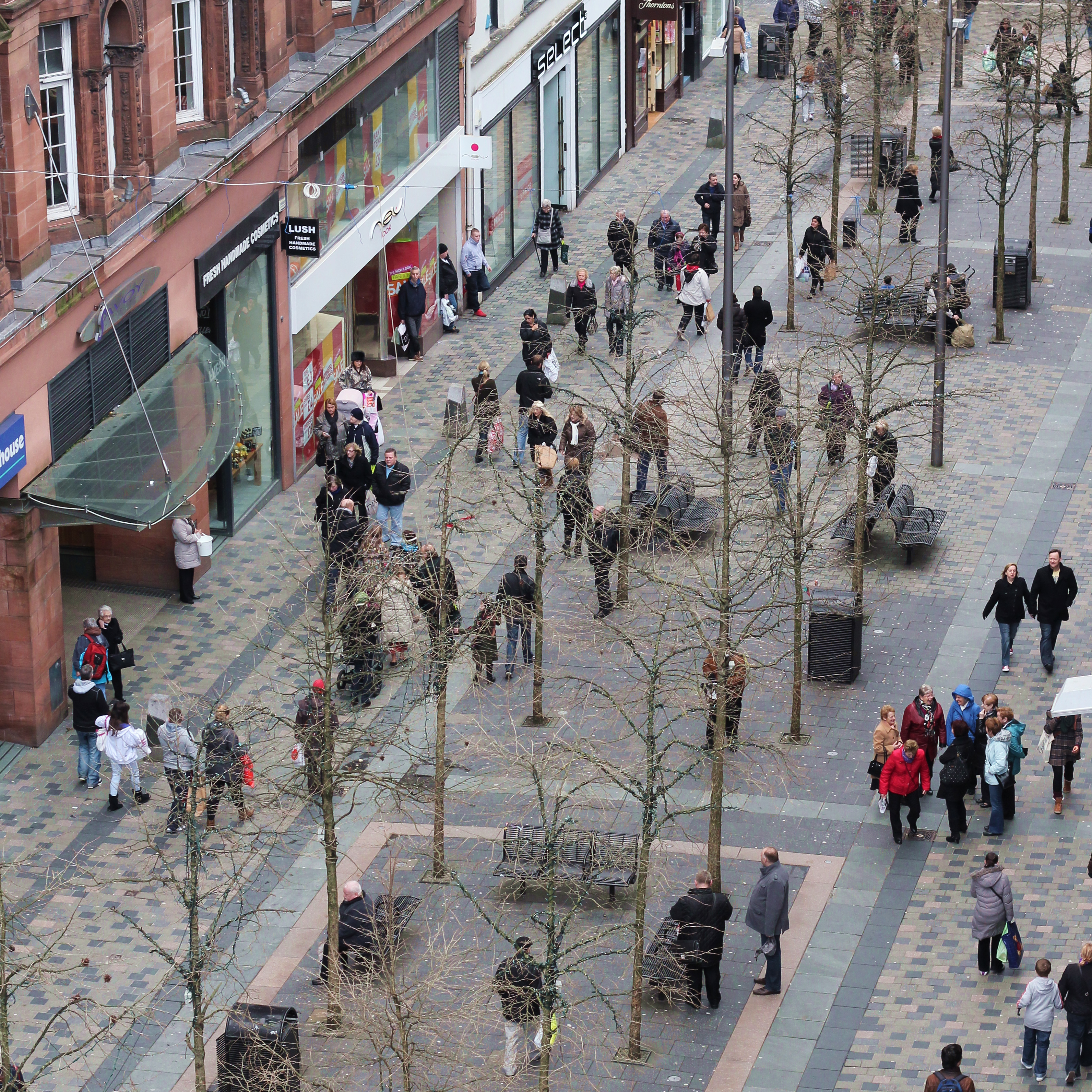|
Willow Tearooms
The Willow Tearooms are tearooms at 217 Sauchiehall Street, Glasgow, Scotland, designed by internationally renowned architect Charles Rennie Mackintosh, which opened for business in October 1903. They quickly gained enormous popularity, and are the most famous of the many Glasgow tearooms that opened in the late 19th and early 20th century. The building was fully restored, largely to Mackintosh's original designs, between 2014 and 2018. It was re-opened as working tea rooms in July 2018 and trades under the name "Mackintosh at The Willow". This follows a trademark dispute with the former operator of The Willow Tearooms which was resolved in 2017. This name is now used at tea room premises in Buchanan Street and was also additionally used at the Watt Brothers Department Store in Sauchiehall Street, Glasgow between 2016 and its closure in 2019. The Tea Rooms at 217 Sauchiehall Street first opened in 1903 and are the only surviving Tea Rooms designed by Charles Rennie Mackintosh for ... [...More Info...] [...Related Items...] OR: [Wikipedia] [Google] [Baidu] |
Art Nouveau
Art Nouveau (; ) is an international style of art, architecture, and applied art, especially the decorative arts. The style is known by different names in different languages: in German, in Italian, in Catalan, and also known as the Modern Style in English. It was popular between 1890 and 1910 during the Belle Époque period, and was a reaction against the academic art, eclecticism and historicism of 19th century architecture and decoration. It was often inspired by natural forms such as the sinuous curves of plants and flowers. Other characteristics of Art Nouveau were a sense of dynamism and movement, often given by asymmetry or whiplash lines, and the use of modern materials, particularly iron, glass, ceramics and later concrete, to create unusual forms and larger open spaces.Sembach, Klaus-Jürgen, ''L'Art Nouveau'' (2013), pp. 8–30 One major objective of Art Nouveau was to break down the traditional distinction between fine arts (especially painting and sculptu ... [...More Info...] [...Related Items...] OR: [Wikipedia] [Google] [Baidu] |
Argyle Street, Glasgow
Argyle Street is a major thoroughfare in the city centre of Glasgow, Scotland. With Buchanan Street and Sauchiehall Street, Argyle Street is one of the main shopping streets in the city centre. It is the longest street by distance in the city centre, running for . Overview It begins in the south-eastern corner of the city centre, at the Trongate, where it is pedestrianised as far as Queen Street. This section forms the major shopping section of the road, including the St. Enoch Centre and the Argyll Arcade (a Victorian arcade principally containing jewellers). Closed to most traffic, this section forms a taxi and bus corridor for services travelling to the east and south-east of the city. After crossing the junction with Union Street / Jamaica Street, it passes underneath the expanse of railway lines at Glasgow Central Station (the so-called ''Hielanman's Umbrella'') before becoming a major thoroughfare ( A814) connecting the city centre to the M8 motorway and the Clydeside ... [...More Info...] [...Related Items...] OR: [Wikipedia] [Google] [Baidu] |
Motif (art)
In art and iconography, a motif () is an element of an image. The term can be used both of figurative and narrative art, and ornament and geometrical art. A motif may be repeated in a pattern or design, often many times, or may just occur once in a work. A motif may be an element in the iconography of a particular subject or type of subject that is seen in other works, or may form the main subject, as the Master of Animals motif in ancient art typically does. The related motif of confronted animals is often seen alone, but may also be repeated, for example in Byzantine silk and other ancient textiles. Where the main subject of an artistic work such as a painting is a specific person, group, or moment in a narrative, that should be referred to as the "subject" of the work, not a motif, though the same thing may be a "motif" when part of another subject, or part of a work of decorative art such as a painting on a vase. Ornamental or decorative art can usually be analysed in ... [...More Info...] [...Related Items...] OR: [Wikipedia] [Google] [Baidu] |
Furniture
Furniture refers to movable objects intended to support various human activities such as seating (e.g., stools, chairs, and sofas), eating ( tables), storing items, eating and/or working with an item, and sleeping (e.g., beds and hammocks). Furniture is also used to hold objects at a convenient height for work (as horizontal surfaces above the ground, such as tables and desks), or to store things (e.g., cupboards, shelves, and drawers). Furniture can be a product of design and can be considered a form of decorative art. In addition to furniture's functional role, it can serve a symbolic or religious purpose. It can be made from a vast multitude of materials, including metal, plastic, and wood. Furniture can be made using a variety of woodworking joints which often reflects the local culture. People have been using natural objects, such as tree stumps, rocks and moss, as furniture since the beginning of human civilization and continues today in some households/campsite ... [...More Info...] [...Related Items...] OR: [Wikipedia] [Google] [Baidu] |
Interior Design
Interior design is the art and science of enhancing the interior of a building to achieve a healthier and more aesthetically pleasing environment for the people using the space. An interior designer is someone who plans, researches, coordinates, and manages such enhancement projects. Interior design is a multifaceted profession that includes conceptual development, space planning, site inspections, programming, research, communicating with the stakeholders of a project, construction management, and execution of the design. History and current terms In the past, interiors were put together instinctively as a part of the process of building.Pile, J., 2003, Interior Design, 3rd edn, Pearson, New Jersey, USA The profession of interior design has been a consequence of the development of society and the complex architecture that has resulted from the development of industrial processes. The pursuit of effective use of space, user well-being and functional design has contributed ... [...More Info...] [...Related Items...] OR: [Wikipedia] [Google] [Baidu] |
Billiards
Cue sports are a wide variety of games of skill played with a cue, which is used to strike billiard balls and thereby cause them to move around a cloth-covered table bounded by elastic bumpers known as . There are three major subdivisions of games within cue sports: * Carom billiards, played on tables without , typically 10 feet in length, including straight rail, balkline, one-cushion carom, three-cushion billiards, artistic billiards, and four-ball * Pool, played on six-pocket tables of 7-, 8-, 9-, or 10-foot length, including among others eight-ball (the world's most widely played cue sport), nine-ball (the dominant professional game), ten-ball, straight pool (the formerly dominant pro game), one-pocket, and bank pool *Snooker, English billiards, and Russian pyramid, played on a large, six-pocket table (dimensions just under 12 ft by 6 ft), all of which are classified separately from pool based on distinct development histories, player culture, rules, ... [...More Info...] [...Related Items...] OR: [Wikipedia] [Google] [Baidu] |
Meadow
A meadow ( ) is an open habitat, or field, vegetated by grasses, herbs, and other non- woody plants. Trees or shrubs may sparsely populate meadows, as long as these areas maintain an open character. Meadows may be naturally occurring or artificially created from cleared shrub or woodland. They can occur naturally under favourable conditions (see perpetual meadows), but they are often maintained by humans for the production of hay, fodder, or livestock. Meadow habitats, as a group, are characterized as "semi-natural grasslands", meaning that they are largely composed of species native to the region, with only limited human intervention. Meadows attract a multitude of wildlife, and support flora and fauna that could not thrive in other habitats. They are ecologically important as they provide areas for animal courtship displays, nesting, food gathering, pollinating insects, and sometimes sheltering, if the vegetation is high enough. There are multiple types of mead ... [...More Info...] [...Related Items...] OR: [Wikipedia] [Google] [Baidu] |
Willow
Willows, also called sallows and osiers, from the genus ''Salix'', comprise around 400 speciesMabberley, D.J. 1997. The Plant Book, Cambridge University Press #2: Cambridge. of typically deciduous trees and shrubs, found primarily on moist soils in cold and temperate regions. Most species are known as willow, but some narrow-leaved shrub species are called osier, and some broader-leaved species are referred to as sallow (from Old English ''sealh'', related to the Latin word ''salix'', willow). Some willows (particularly arctic and alpine species) are low-growing or creeping shrubs; for example, the dwarf willow (''Salix herbacea'') rarely exceeds in height, though it spreads widely across the ground. Description Willows all have abundant watery bark sap, which is heavily charged with salicylic acid, soft, usually pliant, tough wood, slender branches, and large, fibrous, often stoloniferous roots. The roots are remarkable for their toughness, size, and tenacity to ... [...More Info...] [...Related Items...] OR: [Wikipedia] [Google] [Baidu] |
Scots Language
Scots (endonym: ''Scots''; gd, Albais, ) is an Anglic language, Anglic Variety (linguistics), language variety in the West Germanic language, West Germanic language family, spoken in Scotland and parts of Ulster in the north of Ireland (where the local dialect is known as Ulster Scots dialect, Ulster Scots). Most commonly spoken in the Scottish Lowlands, Northern Isles and northern Ulster, it is sometimes called Lowland Scots or Broad Scots to distinguish it from Scottish Gaelic, the Goidelic languages, Goidelic Celtic language that was historically restricted to most of the Scottish Highlands, the Hebrides and Galloway after the 16th century. Modern Scots is a sister language of Modern English, as the two diverged independently from the same source: Early Middle English (1150–1300). Scots is recognised as an indigenous language of Scotland, a regional or minority language of Europe, as well as a vulnerable language by UNESCO. In the 2011 United Kingdom census, 2011 Scottis ... [...More Info...] [...Related Items...] OR: [Wikipedia] [Google] [Baidu] |
Blythswood Square
Blythswood Square is the Georgian square on Blythswood Hill in the heart of the City of Glasgow, Scotland. The square is part of the 'Magnificent New Town of Blythswood' built in the 1800s on the rising empty ground west of a very new Buchanan Street. These open grounds were part of the vast Lands of Blythswood stretching to the River Kelvin acquired by the Douglas-Campbell family in the 17th century.''Glasgow Past and Present''; by Senex and others, three volumes published in 1884 The Blythswood district became a Conservation Area in 1970, because of its important architectural and historic buildings. The square is one of the largest residential developments on Blythswood Hill on the of ground purchased in 1802 from the Campbells of Blythswood by The Great Improver - William Harley textile manufacturer and merchant. Harley also owned the adjacent mansion and 10-acre estate of Willow Bank, where he created and opened his Willowbank/Blythswood Pleasure Gardens with view ... [...More Info...] [...Related Items...] OR: [Wikipedia] [Google] [Baidu] |
William Harley
William Harley (1767–1829) was a Scottish textile manufacturer and entrepreneur who is known for his early contributions to the city of Glasgow, including the development of the New Town of Blythswood, covering Blythswood Hill, and pioneering hygienic dairy farming. Early life Harley was born in Glen Devon, Scotland, but lost both parents at an early age, so was brought up by his paternal grandmother. He trained as a weaver in Kinross under the employ of his maternal uncle who produced satinet, and then later for his uncle's business in Perth. Ventures In 1789 William Harley moved to Glasgow, becoming a textile manufacturer, employing some 600 handloom weavers in partnership with a fellow member of the Merchants House but soon opened his own business warehouse on the corner of George Square on South Frederick Street. Development of Blythswood By 1802, and now married to Jane Laird of Greenock, his business was so profitable that he purchased a house called Willowba ... [...More Info...] [...Related Items...] OR: [Wikipedia] [Google] [Baidu] |
Sauchiehall Street, Glasgow, Around 1914 Looking East
Sauchiehall Street () is one of the main shopping streets in the city centre of Glasgow, Scotland, along with Buchanan Street and Argyle Street. Although commonly associated with the city centre, Sauchiehall Street is over in length. At its central west end is Charing Cross, followed by the Category-A listed crescents and terraces which lead up to Park Circus, finally meeting Argyle Street in the West End in front of Kelvingrove Park and the Kelvingrove Museum, where they merge to form Dumbarton Road, continuing through Partick. Name Sauchiehall is a corruption of the Old English and Scots , ; abounding in willows and ; a low-lying meadow by the side of a river (compare Sausalito, California). is pronounced 'haw' in Scots and can be mistaken for the Scots , pronounced the same, meaning hall. History At its height, from 1880 to the 1970s, Sauchiehall Street was known as one of the most famous streets in Glasgow, and known internationally, due to its panoply of entertainme ... [...More Info...] [...Related Items...] OR: [Wikipedia] [Google] [Baidu] |








